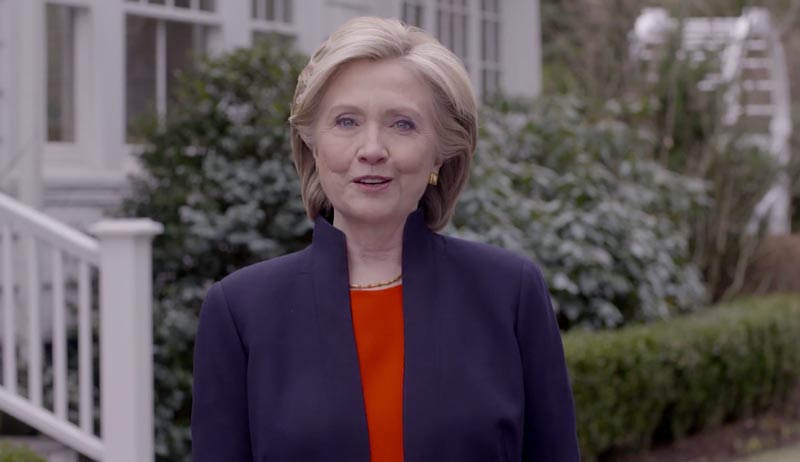
After months of no one truly wondering, Hillary Clinton threw her hat into the 2016 Presidential race yesterday. Familiar responses ensued among the Republican and Democratic establishment: the GOP, shockingly, is not with Secretary of State/Senator/First Lady Clinton, mainline Dems jumped on board, and progressive Democrats question whether she can capture the Warren wing of the party while catering to limousine liberals.
But let’s not count feminists in Secretary Clinton’s camp just yet. Ambivalence reigns here and paths to feminist consciousness best predict views on Hillary 2016.
In the American case, women’s organizing is best captured in three waves. The early first-wave (1848-75) started out quite radical for the day in its advocacy of role change for women, property rights, and abolition. The shift to suffrage (1890-1925) narrowed these views considerably in advocating for the franchise alone and, in some branches, adopted racist rhetoric as African-American men gained the vote before white women.
The racial and class tensions that defined the first-wave of women’s organizing remain in new forms in the second- and third-waves. These are the more familiar eras and most immediately relevant to Senator Clinton’s candidacy.
The second wave of women’s organizing in the US lasted from the late 1960s to 1982 by most accounts. Here liberal, socialist, and radical feminists all debated and advanced views on what women’s liberation can and should be. Nonetheless, the liberal view that “feminism is the radical notion that women and men should be treated equal” has been most transcendent. Though there were tensions between the more bureaucratic and collectivist branches of liberal feminism, the defining cleavage among adherents was age as these women were almost exclusively affluent and white.
And these feminists are all in for Hillary Clinton.
She personifies the liberal feminist vision of inclusion at the most powerful levels of business and politics without fundamentally challenging the underpinnings of these institutions. Indeed, her career path personifies the liberal, inclusionary ideal – educated/fostered with the liberal feminist view at one of the seven sisters, earned entry to an elite law school, a leading legal career, first lady, senator, secretary of state. And now second-time formidable presidential candidate. Impressive and titled.
For the liberal feminist, electing Hillary Clinton is the culmination then of fighting for equal rights, full and complete political incorporation, and the substantial removal of gender based discrimination in social and political structures. Her ascension is a powerful political symbol – it alone does not negate rampant areas of gender bias – but it matters for young girls’ and boys’ political socialization and is the penultimate breaking of the glass ceiling. Like many liberal feminists, Senator Clinton has had to compromise career choices, balance family, and endeared the double standards of likability and critiques of her hair, body, relationship, and fashion choices.
So if Hillary Clinton wins, the promises and hopes of second-wave feminist organizing – at least of the liberal branch – wins.
The story is more complicated for third-wave feminists who prioritize identity claims, question whether political inclusion in a hopelessly flawed political system is a worthy goal, and name the embedded hierarchies of liberal feminism. It critiques the deep inequities in our market economy (Wall St.) and the elite political class who still look awfully affluent and awfully white even as more women gain office.
And Secretary Clinton is all these things too. Her political history is tightly interwoven with economic elites, generously her dealings at the State Department walked a fine line between political expedience and women’s rights, and her female supports remain disproportionately of the Mika Brzezinski and Ariana Huffington variety.
So to say that “women are for Hillary” or that “feminist vote HC” is willfully ignorant of the diversity of views and diversity of positions amongst American feminists.
How these feminists vote, mobilize, volunteer, and give to Secretary Clinton will be substantially influenced by the wave of women’s organizing that most influenced them. This reality is missing from mainstream punditry.
Feminist calculations of the political system are just as important for HRC’s electoral chances. Mainstream punditry misses this too. Third-wave feminists and younger women largely abandoned then Senator Clinton for Barack Obama in 2008. His nuanced discussion of race and intersectionality as well as real economic access more compellingly resonated than Senator Clinton’s seeming blindness to relative privilege. Yet, third-wave feminists have also now experienced the Obama presidency. A presidency where the hope, excitement, and unabashedly popular (and younger) visions of change and willingness to cooperate for shared policy goals were popularly embraced. And then rejected in DC.
If the good will, mobilization, and embrace of a new day that was Barack Obama can be so quickly thwarted by Washington DC and the powers that be in the Republican and Democratic establishments, then confidence in the political system erodes among young people and young feminists alike.
This produces a quandary. Hillary Rodham Clinton has the second-wave feminists. Whether or not she has the third-wave feminists is then a dual determination by these women of whether or not (1) the American political system is so flawed that the only way “to win” is by sending in one of the elite’s own (HRC) who will inevitably disappoint but nonetheless break barriers; and, (2) if HRC can convince these women that while she is of the second-wave her policy views are not limited to liberal feminism alone.
It’s a tall order. And one worthy of the first female President. She is of the movement and needs to capture its variants.

